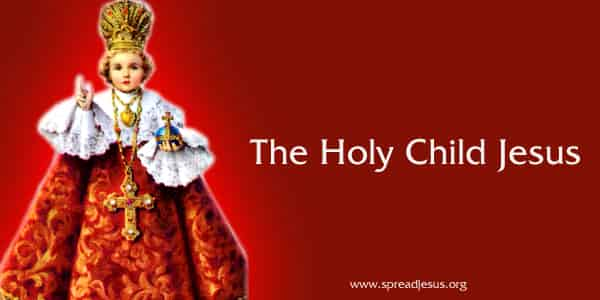Saint Cuthbert Catholic Saint
CATHOLIC SAINTS 28-12-2023, 19:39

Saint Cuthbert
Catholic Saint
st.Cuthbert-Monk, bishop and miracleworker
Feast Day : March 20
Also known as: Cuthbert of Lindisfarne
Most of what is known about Cuthbert, one of the most famous of Celtic saints, comes from the Venerable Bede’s account of his life, written around 716 (in verse) and in 721 (in prose). Bede was moved to write about the saint upon hearing of the discovery of his incorrupt body. Little is known about Cuthbert’s early life. He was born probably around 634 to an Anglo-Saxon family near the River Tweed in southern Scotland. (An Irish hagiography claims him as one of their own, son of an Irish princess.) In 651 Cuthbert entered the Celtic monastery at Melrose, where he served with his mentor, a priest named Boisil. In 661 he accompanied St. Eata, the abbot of Melrose, to Ripon to build a new abbey, where he served as guestmaster. Returning to Melrose, he became prior after the death of Boisil and held the position for many years. He had great skill as a preacher. He then took a group of monks to the Benedictine abbey at Lindisfarne, where he served as prior. Then desiring a solitary life, Cuthbert moved to Inner Farne Island and built his hermit’s cell. However, others sought out the popular saint, wanting to confess and seeking his guidance. He helped all who came to him. In 684 he was elected bishop against his own wishes. He refused to acknowledge all letters to the fact, and finally King Ecgfrith sailed to the island with a group of officials and begged him to do so. Cuthbert was consecrated bishop of Lindisfarne in 685.
He resumed his active ministry, caring for the sick, prophesying and working miracles. In 687, Cuthbert knew his life was nearing its end. He resigned as bishop and went back to his beloved Inner Farne. Two months later he fell ill and died while praising God. He was buried on his island in accordance with his wishes. A year later, his body was moved to the monastery at Lindisfarne. Nine years after his death, Cuthbert was exhumed for the taking of relics. The monks expected to find nothing but dry bones and decayed clothing, and were astonished to find his body incorrupt and fresh, as though he were sleeping. The body was placed in new clothing and reburied. In 875, the Vikings raided Lindisfarne and destroyed Cuthbert’s shrine. His incorrupt body was moved to Northumbria. It was given several resting places, and then finally was moved to Durham, where it was enshrined on September 4, 999. Numerous pilgrims visited, including St. Thomas of Canterbury, and in 1069 William the Conqueror.
The casket was opened in 1104 and the body was found still incorrupt and smelling sweet. In 1537, Henry VIII ordered the tomb destroyed as part of his dissolution of the monasteries. The jewels and ornaments were plundered. When the casket was opened, the body was found still intact, dressed in garments for the Mass, and with a fortnight’s beard on the face. The monks were allowed to bury Cuthbert in the ground where the shrine had been. In 1827, the saint was exhumed. This time the remains were but a skeleton in decaying robes. In art Cuthbert is shown in the dress of a bishop, holding the head of St. Oswald, whose skull is preserved in his coffin. Sometimes he is shown also with swans and otters. Numerous miracles and extraordinary events are related about Cuthbert throughout his life. Bede relates several visits by angels early in life. One angel appeared as a man on horseback and told Cuthbert how to heal a painful and crippling tumor on his knee. One night while tending sheep, Cuthbert had a vision of choirs of angels descending from heaven, inspiring him to seek the spiritual life. When he was at Ripon, angels frequently appeared and conversed with him, and would bring him food. According to Bede, he sowed a field with barley and reaped a harvest that the birds began to eat. He told them they had no right to the grain and to depart, and they did, never to return. In another instance involving birds, Cuthbert was annoyed by crows who stole pieces of thatched roof that Cuthbert had made for his brethren. He told the birds to depart and do no more harm.
They did. Three days later, seemingly penitent crows returned bearing a gift of hog’s lard, which Cuthbert gave to his brethren for the greasing of their shoes. Bede recounts another episode involving Cuthbert’s rapport with animals. One night he left his monastery and was followed by a curious brother. Cuthbert went down to the sea and waded into the water until he was up to his neck. He spent the night praising God. In the morning, he waded out and fell to his knees on the beach to continue praying. Two sea otters came out of the water and wiped him with their bodies and breathed upon his feet. Cuthbert blessed them and they returned to the sea. Cuthbert banished the devils that reputedly haunted the island of Inner Farne, and produced a miraculous spring from the hard and stony ground where he built his cell. He was able to change the course of a fire threatening to destroy the house of a holy woman. He changed water so that it tasted like wine. He healed people with sprinklings of holy water, anointments with oil and consecrated bread. He healed others by a laying on of hands, and also at a distance with prayer. Miracles of healing continued to be reported after his death.
.jpg)
The Gospel According to Mark Chapter 6:1-56 Mark 6:1 He departed from there and came to his native place,...
Learn more.jpg)
The Gospel According to Matthew Chapter 24:1-51 Matthew 24:1 Jesus left the temple area and was going away,...
Learn more
The Book of Ecclesiastes Chapter-1 Ecclesiastes 1:1 The words of Ecclesiastes, the son of David, the king of...
Learn more


